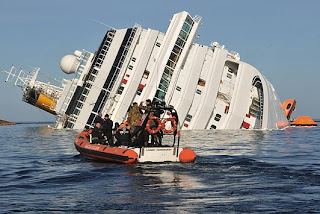CONWAY — Firefighter Danny Collins, 38, is home in Conway after being hospitalized in Shreveport, La., for a brain injury that occurred Sept. 22 during dive training in Hot Springs.
Conway Fire Chief Bart Castleberry said Collins suffered a brain embolism “and other things.”
“It was really touch and go for the first two days,” Castleberry said.
He said Collins and firefighters Jonathan Talley and Ty Ledbetter were taking part in a dive class at Lake Ouachita in about 20 feet of water and were doing “a grid search — they search in a pattern, a grid.”
Talley was on the bank, attached to Ledbetter, who was attached to Collins.
“Ledbetter noticed he was getting pulled on, so he went back and checked, and Danny was tangled up,” Castleberry said. “He helped [Collins] untangle, and they went to the surface. Danny immediately started having trouble, physically.”
Castleberry said Collins was first taken to a Hot Springs hospital.
He said the doctor on duty had been a physician in Florida and “had seen these types of injuries before.”
The doctor said Collins needed a hyperbaric chamber for brain injuries, and Collins was taken to Shreveport.
“He had to fly at a certain altitude, couldn’t fly high,” Castleberry said.
Castleberry said he and other firefighters visited Collins in the hospital. He said Brian Moix, division chief and training officer, stayed in Shreveport the entire time.
The chief said Collins could talk “in short periods.”
Castleberry said he couldn’t elaborate on Collins’ condition, but he said he doesn’t expect Collins to return to the Fire Department “for a while.”
Capt. Rick Powell, who was also with Collins in Shreveport, said, “He’s in good spirits. We’re looking forward to getting him back down here.”
Powell worked with Collins at Wilson Drews Central Fire Station in downtown Conway.
Collins is a driver, a bomb technician and a special-operations team member.
“He’s a good man; he’s seasoned,” Castleberry said. “He’s all-out fire department.”
Castleberry said because it was an on-the-job injury, the city will help with Collins’ expenses, as will a firefighters benevolent fund.
The Conway Fire Department’s special rescue team trains “all the time,” Castleberry Conway Firefighter Suffers Brain Injury During Training Exercise
By: KARK 4 News
A CONWAY FIREFIGHTER IS IN THE INTENSIVE CARE UNIT AT A SHREVEPORT HOSPITAL TONIGHT SUFFERING FROM A BRAIN INJRY AFTER AN UNDERWATER TRAINING EXERCISE.
Ten-year veteran Captain Danny Collins was working in 20 feet of water in Hot Springs yesterday when he became tangled in some rope. He signalled to his partner, but when they surfaced, Collins struggled to breath.
He was air lifted to Shreveport where they have a hyperbaric chamber and specialize in these types of brain injuries.
He was air lifted to Shreveport where they have a hyperbaric chamber and specialize in these types of brain injuries.
His wife and mom were at his side Sunday night. One of his best friends, a fellow firefighter, was on his way to the hopsital as of Sunday night as well. KARK will keep you updated on his recovery.
Ark. Firefighter Suffers Embolism During Dive Training
FIREHOUSE.COM NEWS
CREATED: SEPTEMBER 24, 2012
CREATED: SEPTEMBER 24, 2012
A CONWAY FIREFIGHTER SUFFERED AN EMBOLISM WHILE PARTICIPATING IN A DIVING CLASS IN HOT SPRINGS, ARK. ON SATURDAY.
FIREFIGHTER DANNY COLLINS WAS PERFORMING A SEARCH GRID TASK IN ABOUT 20 FEET OF WATER WHEN THE INCIDENT OCCURRED, ACCORDING TO THE LOG CABIN DEMOCRAT.
He was flown to a hospital in Shreveport, La. for treatment.
Firefighter Ty Ledbetter found that Collins had become tangled in his line and as the two men were attempting to fix the line, Collins began having problems breathing.
Fire Chief Bart Castleberry told the newspaper that he expects Collins to be in the ICU for about a week and spend time in a hyperbaric chamber for his injuries.
"It was a blessing that the doctor in Hot Springs had seen this kind of injury before and knew what to do," he said.
Collins was able to see his wife before being airlifted to the hospital and his family and a liaison from the fire department have joined him in Shreveport.
Firehouse.com will provide more information on this story as it becomes available.

















